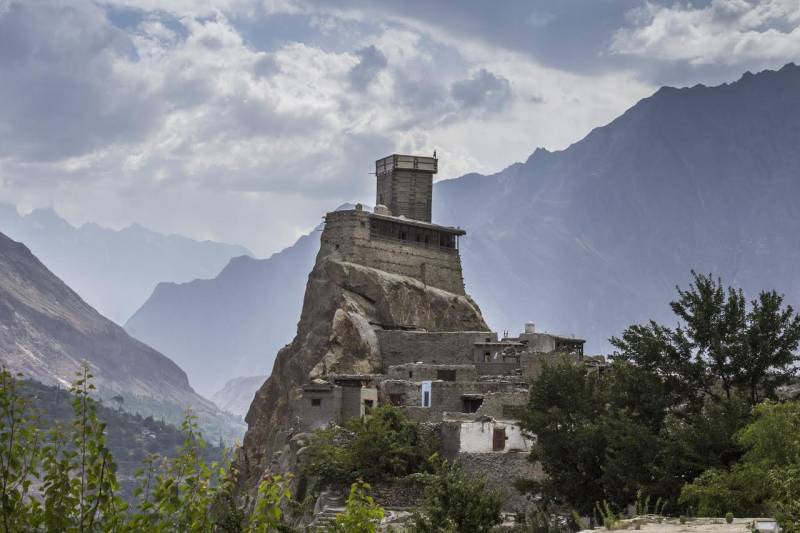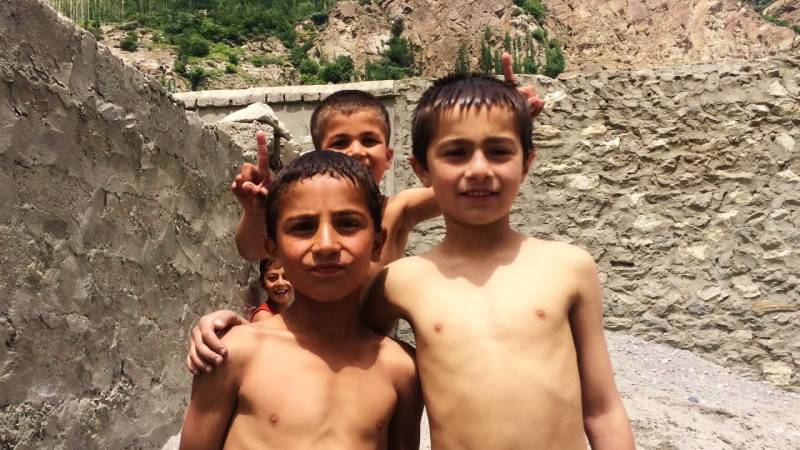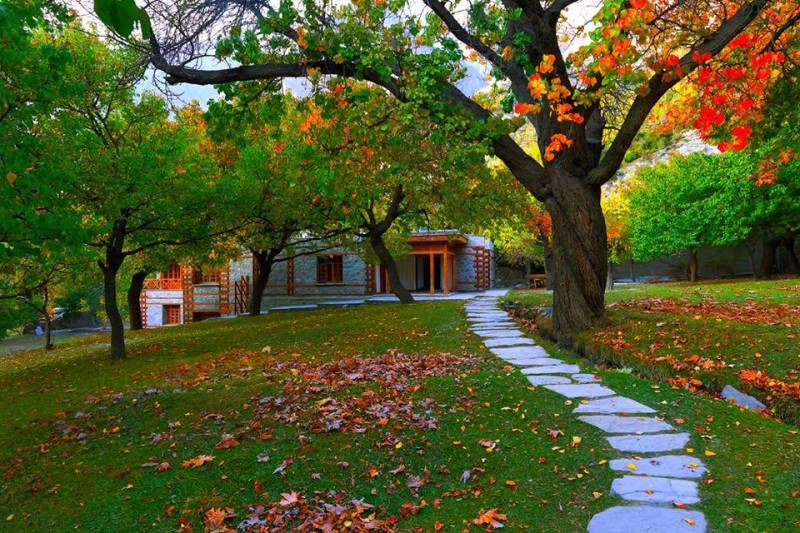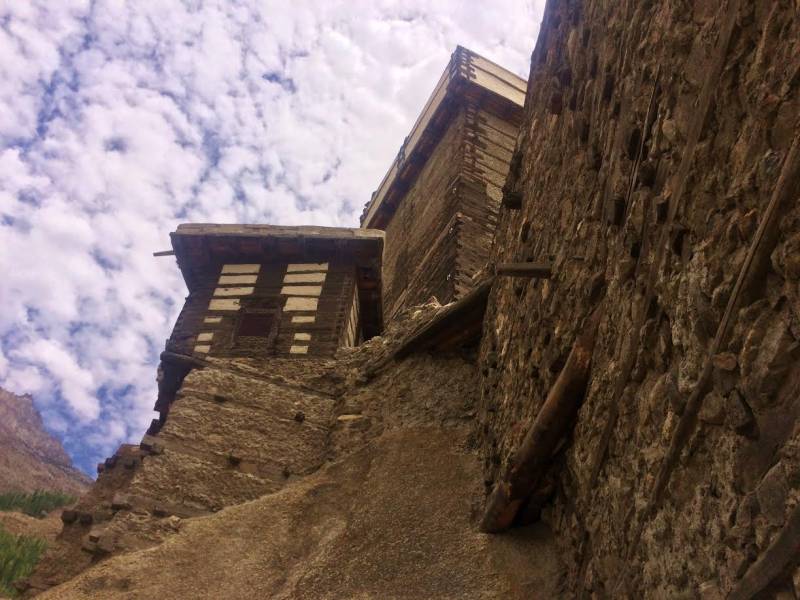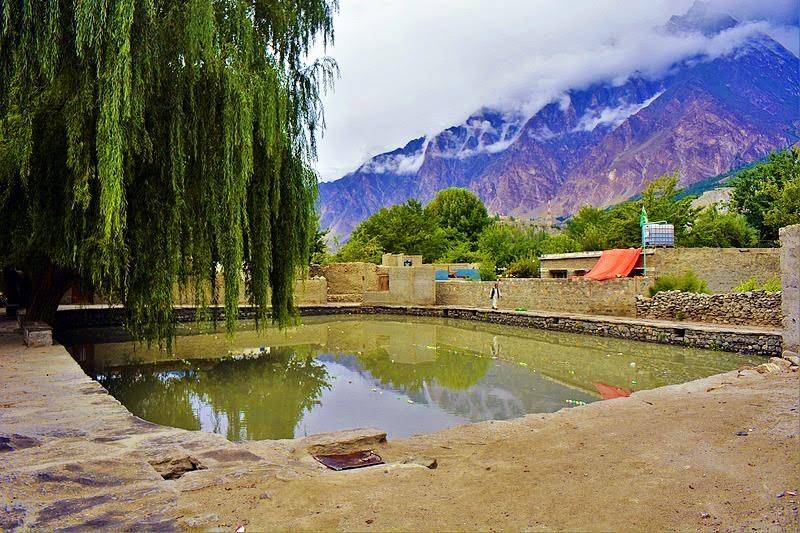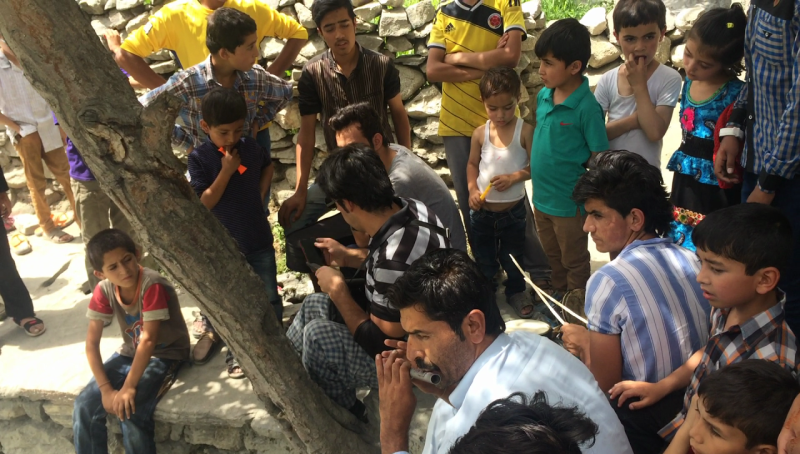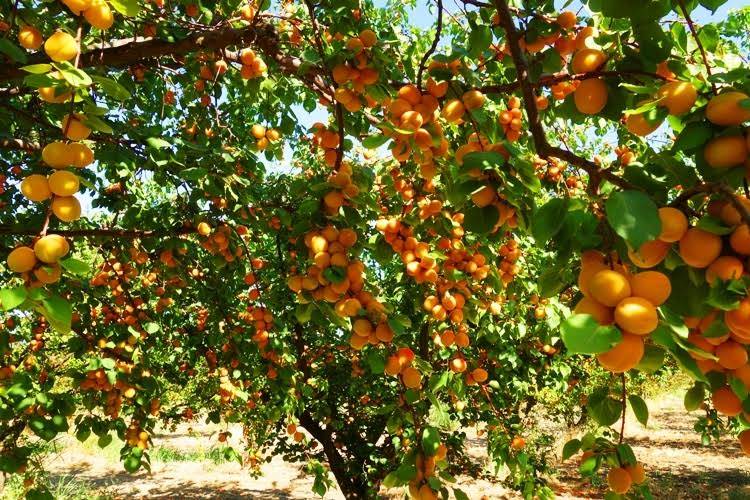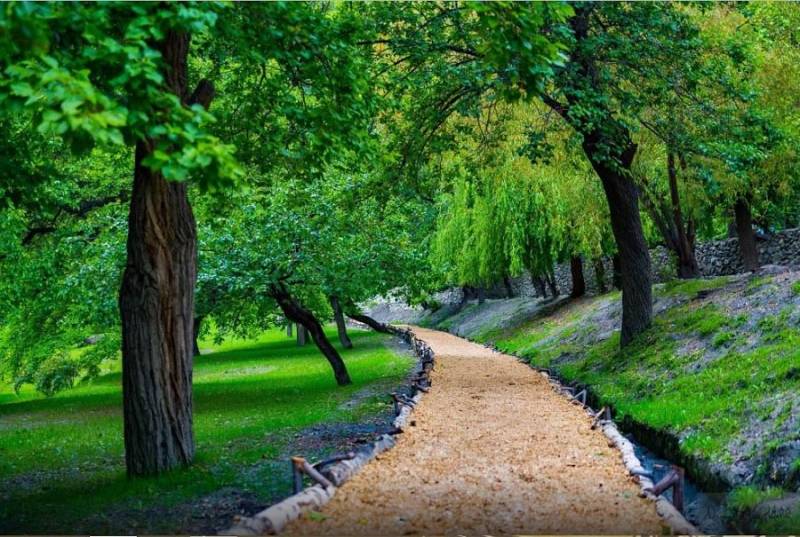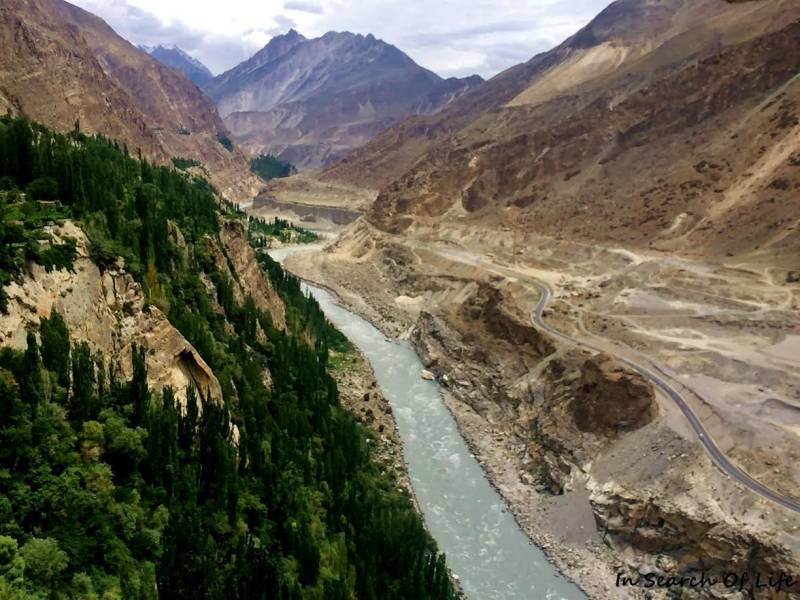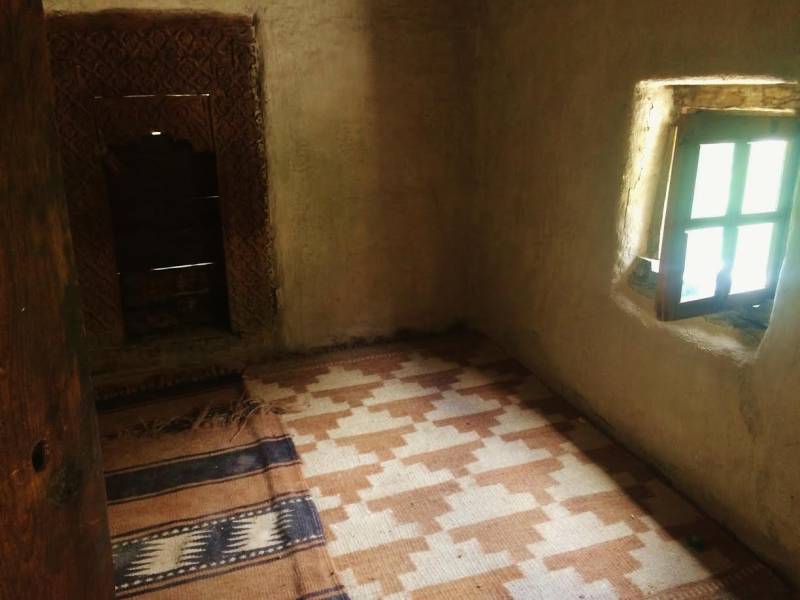On our second morning in Hunza, I woke up early, made myself a nice cup of coffee and sat in the spacious dining hall at Eagle’s Nest, trying to make some sense of the sensory overload called Hunza. I was at an unbelievably beautiful place.

That day was reserved to explore the beautiful people and amazing culture and civilization of Hunza. We started after breakfast and drove to Altit Fort which wasn’t very far from the hotel. Coasters stopped by the road and we walked through narrow lanes all the way to the fort entrance.

People of Hunza are a fascinating community. They are literate, open minded, courteous and very pleasant. Altit is a beautiful small village with clean streets and pretty small houses. I saw women running shops. People were happy and content. They weren’t living in affluence but they certainly enjoyed peace of mind and contentment of heart. In the center of the village, there’s a big water pond. Children and men were playing inside the water.

They must be having great fun for their red faces were radiant with happiness. Old women were gathered on raised sitting platforms around the pond, enjoying a good chat while seeing their grandchildren at play. Two men were playing music under the shade of a tree. One had a Hunzai flute glued to his lips, the other was playing drums and the music they were making was beautiful. The village was so full of life.

The fort entrance opens up into the royal gardens, an apricot orchard grown over an irregular plain of lush green grass fields. A path filled with sawdust lead us through the gardens to the fort. Altit Fort is the most ancient surviving structure of Gilgit Baltistan. It is 1100 years old. For centuries, the fort was used by the Mirs of Hunza as royal residence.

It never lost any importance for its strategic location, standing high at the confluence of Hunza and Nagar valleys, just above the river and ancient silk route. Structure of the fort is quite simple. A huge rock serves as the foundation. Different levels of the building and the solitary high tower rise from it. We entered through a side entrance opening into a dark corridor and steps leading to upper stories.

A young guide from the local community was giving an interesting account of the history and significance of the fort in his sweet and highly accented Urdu. The main hall was used for worship, social gatherings and cooking at the same time.
There was a many centuries old, huge cooking pot which was made of some heat absorbing material and could keep the food hot for a long time, a Shiv-Lingam, a Kashmiri samovar and a beautifully carved antique wooden chest which was used to keep flour. Its presence in the main hall signifies wheat’s importance in those days. Maybe it was a luxury for the mountain folk in ancient times.

The wooden chest was carved with dozens of little swastikas. After explaining the meaning of swastika as the ancient Aryan symbol signifying four basic elements of nature, the guide said, “General Niazi used it as his symbol and all his soldiers were required to wear it.” I couldn’t help laugh but didn’t let the good man know. He was confusing Nazi Germany with East Pakistan tragedy and its famous black sheep General Niazi. But he had every right to do so. Who would care about the dark pages of history when they are surrounded by snow-capped mountains, scenic valleys with rivers flowing through them and beautiful culture and people?

We took a tour of the royal chambers. Every now and then, the guide would open a small lid in the floor which in turn opened into the dungeons far below. He told us that the royals defecated on these openings to add to the misery of their prisoners. The galleries hanging from the royal chambers offered a view worth dying for. The beautiful landscape of Nagar Valley, blue strip of the river marked through it and a snake like black line of Karakorum highway running alongside the river.
We had been down there just yesterday on our way to Khunjerab Pass. Other side of the fort faces Hunza Valley. From the galleries in front of the royal guest rooms, there’s a beautiful view of the village. All its houses were packed around each other, not leaving a single patch of bare land anywhere. There was a strange beauty in its layout. The village was in such a festive mood. For some time, we were hearing sounds of playing music and merrymaking. The guide told us that it was 49th coronation anniversary of His Highness Aga Khan VI, the spiritual leader of Ismaili Muslims. The entire village was dancing, playing music and celebrating. Their loyalty to Aga Khan is exemplary.

On the roof of the fort there’s a high tower which must’ve been used to keep an eye on the surrounding valleys. There’s also a small ancient mosque which was used by the Mirs.
The roof offers a beautiful panoramic view of the valley and surrounding mountains Altit Fort was in a decrepit condition until recently when Aga Khan Foundation and Royal Norwegian Embassy took an interest, restored it to its former glory and converted it into a tourism site. Today, it is recognized as a famous landmark of Gilgit Baltistan.

The royal gardens were a sight for sore eyes. There were countless apricot trees laden with ripe fruit. We plucked fresh apricot and relished their exquisite taste. In Lahore, the color of apricots we get is green and pink. Perhaps they are plucked before they are ripe. Apricots at the royal gardens were light orange in color and sweeter than honey. The day was sunny and it felt very soothing under the shade of trees. The grass looked like a green carpet spread on the garden floor. Wooden diwans and takht posh, covered with carpets and cushions were laid under trees. We sat there talking and relaxing before leaving for Karimabad.
Continued….

